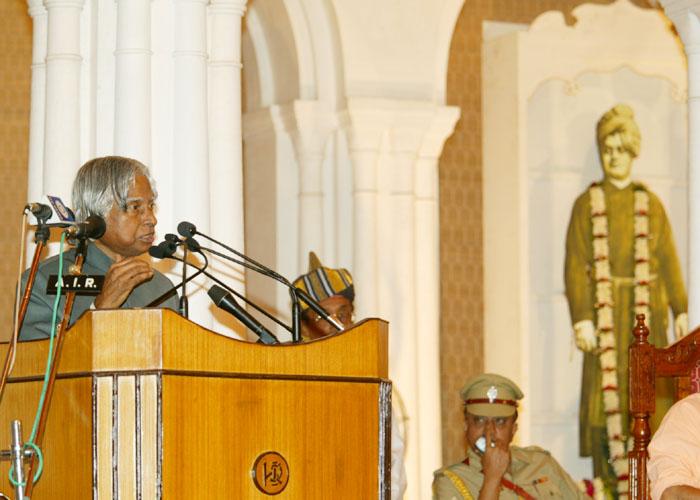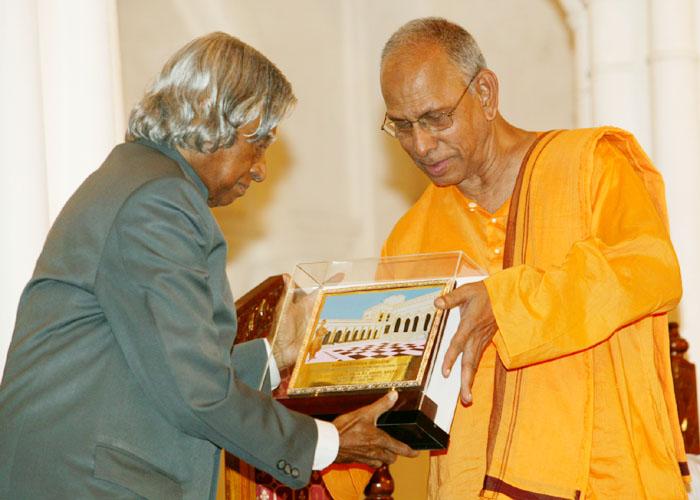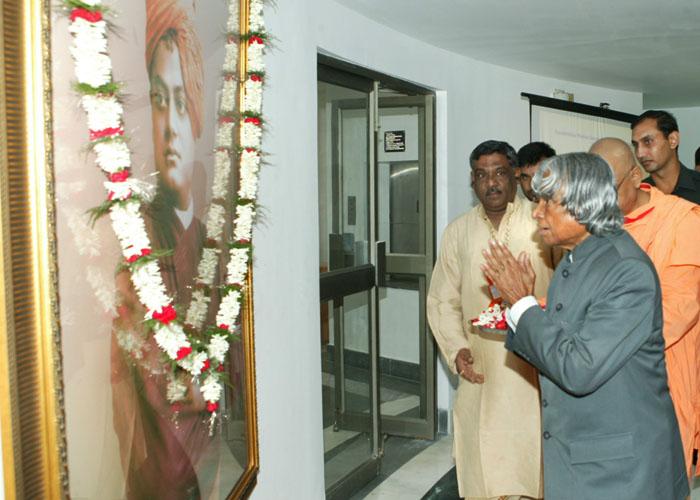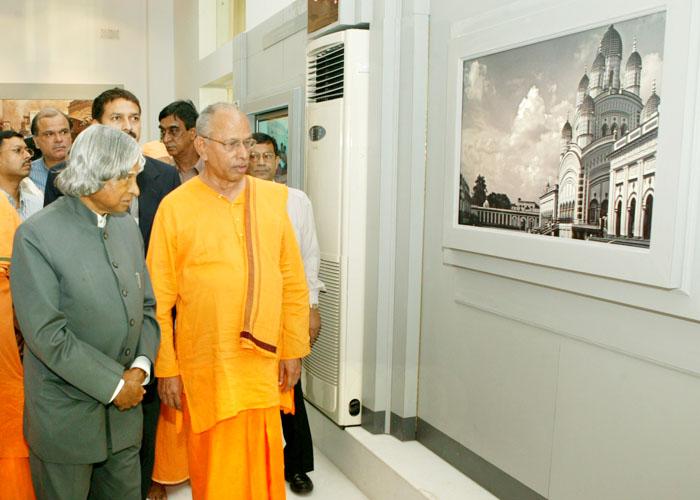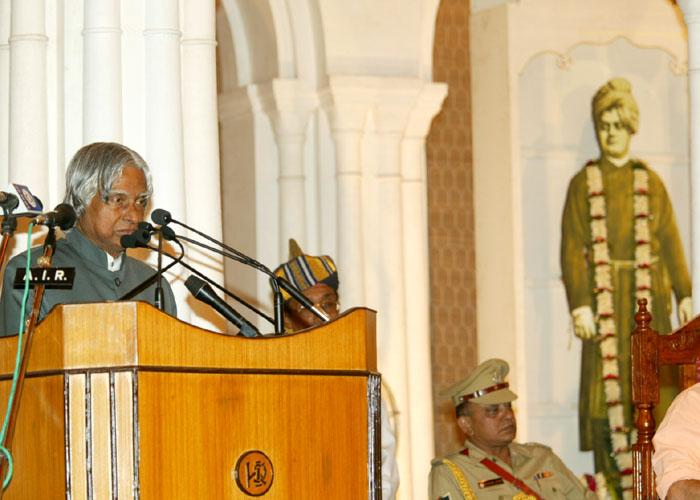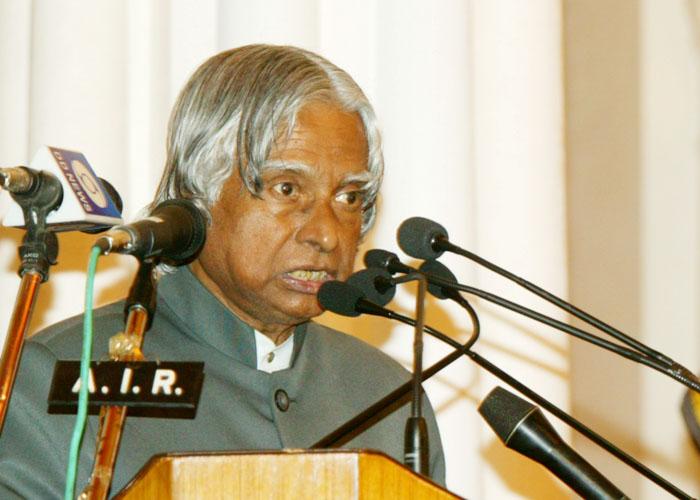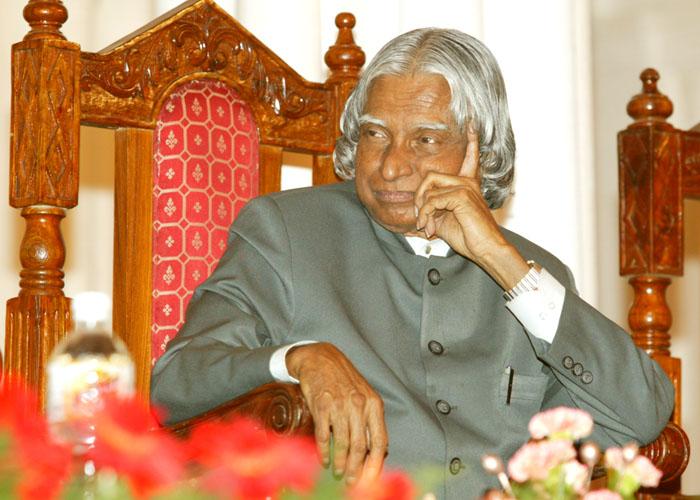Address At The Openinig Ceremony Of Swami Vivekananda's Ancestral House And Cultural Centre At Ramakrishna Mission
Kolkata : 01-10-2004
Awakening India
I am delighted to participate in the inauguration of the Cultural Complex built in and around Swami Vivekananda?s Ancestral House. I congratulate Ramakrishna Mission for having conceived of and implemented this project. I understand that the Archeological Society of India has restored the ancestral house of Swamiji without disturbing the original structure. My pranams to Swamijis, and greetings to the organizers, members of the Ramakrishna Mission, educationists, disciples of Vivekananda, State and Central Government functionaries and distinguished guests on this historic occasion.
Vision of Vivekananda
Friends, when I am in this beautiful environment ? the Ancestral House of Swami Vivekananda, let me recall an event that took place in a ship which was sailing from Japan to Canada in 1893. Two great human beings were traveling in that ship. They introduced each other. They were Swami Vivekananda and Jamsetji Nusserwanji Tata. Swamiji asked Nausserwanji Tata where he was going and what was the mission. Jamsetji Nusserwanji Tata said, ?Swamiji, I am going with a mission to bring steel industry to country?. Friends it was in 1893, when India was ruled by the Britishers. Swamiji said, ?it is indeed a beautiful mission. My best wishes. However, I would like to give you a small caution. Whatever amount you spend to get the process of making steel simultaneously you should learn the metallurgical science of making steel also. I would prefer you to start an Institute, a laboratory to do advanced research on the subject?. What a prophetic statement which came in the year 1893. Many things happened after that. Jamsetji Nusserwanji Tata could not get the technology for manufacturing steel from UK. However, he could get the know how of manufacturing steel after crossing the Atlantic from USA and he established the Tata Iron and Steel Company at Jamshedpur. A big planning took place. That planning had two parts: the first part was to start steel manufacturing plant presently at Jamshedpur in Jharkhand. Simultaneously, he donated one sixth of his property for establishing an Institute of Material Research at Bangalore.
I have visited Jamshedpur sometime back and I saw the fruits of Jamsetji Nusserwanji Tata?s vision: 4 million tons of steel per year being produced by Tata Iron and Steel Company (TISCO). Due to his foresight, India today is self-reliant in steel technology. Now we also see, the seeding .for the research laboratory has been transformed into a great learning centre - Indian Institute of Science. This incident demonstrates the vision of the great personality Swami Vivekananda. His vision was to have a strong and developed India. He clearly foresaw the role science, technology and industry have to play. It is Swamiji who made Jagdish Chandra Bose to get a patent for his invention. His call for awakening of India was not merely in spiritual fields but for all round economic and social progress.
Strong Bonds among Religions
Friends, when I was a Professor at Anna university in Tamil Nadu, I had invitations from many institutions in Rajkot. One invitation was from the Bishop of Rajkot Rev. Father Gregory Karotemprel CMI who asked me to inaugurate the Christ College. On the same day, I addressed the gathering of nearly one lakh students at a function to give the ?Vision of life? organized by Swami Dharmabandhu. Later, I was to go to Porbandar to participate in the students meet organized by the Ramakrishna Mission. I was also enriched by the visit to Alfred school, Rajkot, where M.K. Gandhi had his early education. In the above environment on the same day, two incidents occurred which I would like to share with you.
Before the inauguration of the Christ College, I was invited to the Bishop?s house in Rajkot. When I entered his house I felt as if I was entering a holy place. There was a unique prayer hall, where all religions were connected, respecting each religious sentiment. When the Rev. Father Gregory Karotemprel CMI, Bishop of Rajkot was explaining to me, the significance of his creation of the unique prayer hall there was a call from the nearby Swaminarayan temple requesting me to visit their temple. When I told this to Rev Father Gregory, he said, ?he would also accompany me?. When we entered the temple and reached where the deity of Lord Krishna was located with its splendor it was a unique experience. It was a noon time when the temple is normally closed but it was kept open specifically for us on that day. We all were received with the offering of Tilak on our forehead. It was a great sight with Rev. Father Gregory, Abdul Kalam, and Y.S. Rajan all having the shining Tilak in our foreheads. This incident demonstrated the strength of connectivity of several religions in our country leading to a unique spiritual experience. Cumulative actions following that event led to the Surat Spiritual Declaration in October 2003, in which Ramakrishna Mission also played a great role.
Power of Prayer
The next event was a beautiful event. Swamiji of Ramakrishna Mission, Rajkot requested me that I must visit Ramakrishna Mission for a few minutes on my way to the Airport. When I reached I found that a spiritual discourse was in progress on Ramakrishna?s teaching and Swami Vivekananda?s Mission of Life. After the discourse there was a prayer call. There was a spiritual Sangeet engulfing the hall with rhythmic musical notes. I joined the prayer along with hundreds of devotees. The spiritual environment and the intensity of prayer put me into a different plane. To the surprise of my friends, and the Swamiji accompanying me, it took me to the different plane and the they found that time became indeterminate. This can be the effect of integrated spiritual environment. Now when I am in the Swami Vivekananda heritage building, my mind is experiencing a similar spiritual environment that I experienced in Rajkot. I understand that this Centre has planned a text book library as a part of this heritage. I would like to discuss about the digital library initiative in India which can be useful for the text book library and the research centre of this campus.
Digital library initiatives in India
There is a mission of Digital library web portal to create a portal for digital library of India piloted by the Ministry of Communication and Information Technology (MCIT) with Indian Institute of Science (IISc) and Carnegie Mellon University, USA as partners for fostering creativity and free access to all human knowledge. This digital library as a first step will create a free-to-read searchable collection of one million books by 2005 in India. So far we have digitized 80,000 books in India, out of which 45,000 books are available online in 9 regional languages. Text book library authorities of cultural complex can seek the help of Prof N. Balakrishnan, IISc., for digitization of their books and other related access software through the Digital library initiative. The storage capacity is doubling every year. Today one can get three hundred Giga bytes disks, of a few grams of weight for around US $100. This disk can hold more than 30,000 books. In ten years time, the same sized disk will hold 30 million books, almost larger than the largest of the libraries in the world ? a library on your palm. The digital library of this cultural centre can be integrated with the Visva-Bharati University and other Universities located in Kolkata which will facilitate the researchers to study Ramakrishna and Vivekanandas? literature, comparative religions and Indian culture.
I also understand that the Cultural Centre is planning a Rural and Slum Development Centre for rendering service to poor people in the village and slums. I thought of sharing with you the concept of PURA which may be useful for rendering advice and support to the rural masses.
PURA (Providing Urban Amenities in Rural Areas)
Providing Urban Amenities in Rural Areas (PURA) will minimize the migration of people from rural to urban areas. Our plan is to make the rural environment so attractive that there can be a reverse flow from urban to rural areas. This will certainly help in reducing the major congestion taking place in small number of big cities leading to inadequate infrastructure, pollution, crime, diseases and poor quality of life of the city dwellers.
Rural Prosperity through Connectivity
In our country nearly 700 million people are living in 600,000 villages. Connectivity of village complexes providing economic opportunities to all segments of people is an urgent need to bridge the rural-urban divide, generate employment and enhance rural prosperity. The essential needs of the villages today are water, power, road, sanitation, healthcare, education and employment generation.
Essential Connectivities
The integrated methods, which will bring prosperity to rural India are: the physical connectivity of the village clusters through quality roads and transport; electronic connectivity through tele-communication with high bandwidth fiber optic cables reaching the rural areas from urban cities and through internet kiosks; knowledge connectivity through education, vocational training for farmers, artisans and craftsmen and entrepreneurship programmes; and thereby leading to economic connectivity to enhance the prosperity of village clusters in the rural areas by starting of enterprises with the help of banks, micro credits and marketing the products. The cultural centre can make use of this concept and adopt a few village clusters near Kolkata and facilitate creation of PURAs in partnership with NGOs, philanthropists and banks for enriching the lives of the rural masses and will be a fitting tribute to the memory of Swami Vivekananda.
Conclusion
Dear friends, I am reminded of a brief exhortation to our people given by swami Vivekananda. ?Teach yourself; teach everyone his or her real nature. Call upon the sleeping soul and see how it awakes. Power will come, glory will come, goodness will come, purity will come, and everything that is excellent will come, when this sleeping soul is roused to self conscious activity?. Swami Vivekananda call for evolution of self conscious activity is indeed evolution of righteousness in the heart, where there is righteousness in the heart, there is beauty in the character. When there is beauty in the character, there is harmony in the home. When there is harmony in the home, there is an order in the nation. When there is order in the nation, there is peace in the world. Hence let us work for the evolution of enlightened citizen which is the mission of Vivekananda heritage. Such an enlightened citizens should have a strong body and indomitable spirit as advocated Swamiji to ?arise, awake and stop not till you reach the goal?. The Goal is a prosperous India with peace in itself and giving to the whole world. Let this Complex be an important focal point for radiating such thoughts and actions. It gives me a great pleasure to inaugurate the Cultural Complex and the Heritage Building. I am sure that the people who visit this place will draw immense inspiration from what they see. I have a desire that the inspiration and happiness of visiting this place should also be felt and enjoyed by those who are not fortunate enough to visit this place. I suggest that the Ramakrishna Mission and those who maintain this heritage complex should create a digital archive and high resolution virtual walk through and make it available to the whole world, for Swami Vivekananda is one of the most cherished leaders who belong to the whole world.
May God Bless You.

